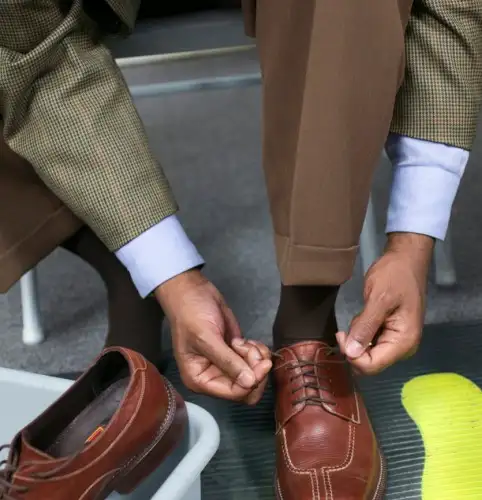
Want to receive stories like this every day? Subscribe to our free Deal Alert newsletter!
The International Air Transport Association (IATA) recently unveiled a proposal for the security checkpoint of the future, aimed at speeding up the process and reducing the hassle for frequent and low-risk travelers.
The proposed system uses biometric data to identify passengers before they enter the checkpoint. The biometric scan identifies “Known Travelers,” who have likely registered with some sort of trusted traveler database, and directs these individuals to a “security tunnel” equipped with metal detectors and other hands-off screening equipment. In theory, these travelers barely have to break stride as they pass through the checkpoint.
“Normal security” and “enhanced security” individuals are directed into separate tunnels with the appropriate level of security for their classification. Presumably, “normal security” would be similar to what we have today, and “enhanced security” would be more intense, perhaps with an interrogation aspect. Each “tunnel” would be equipped with scanning technology and cameras as well.
The IATA estimates that 30 percent of travelers would go through the Known Travelers lane, 60 percent would go through the normal lane, and 10 percent would go through the enhanced lane.
The proposal sounds pretty good, which is too bad because there’s likely no way it could be adopted any time soon. The project would require so much data collection and such a sweeping renovation of hundreds, if not thousands, of checkpoints that it would take years to complete even if the government started tomorrow.
That said, the fundamental idea strikes me as the right way to fix the TSA screening process: Pre-screen as much as possible, and use that information to dictate the right mix of efficiency and pressure at the airport. Rather than treat everyone like a potential terrorist, this model treats everyone like who they actually are—whether you’re a businessperson on your fifth flight that week or a shady character who may be up to mischief.
Readers, would you go through a pre-screen, including biometric data collection, if it meant you could zip through security?
We hand-pick everything we recommend and select items through testing and reviews. Some products are sent to us free of charge with no incentive to offer a favorable review. We offer our unbiased opinions and do not accept compensation to review products. All items are in stock and prices are accurate at the time of publication. If you buy something through our links, we may earn a commission.
Related
Top Fares From
Today's Top Travel Deals
Brought to you by ShermansTravel
France: 8-Night Paris, Avignon & Nice...
Infinity Worldwide Vacations
 vacation
$2880+
vacation
$2880+
Poconos: 3 Nts in Garden of...
ResortsAndLodges.com
 hotel
$305+
hotel
$305+
7-Nt Canada & New England Cruise,...
Princess Cruises
 cruise
$839+
cruise
$839+



